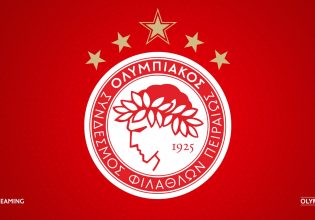Thessaloniki Archaeological Museum: An important cultural spot in Europe
It becomes a new stop in the Cultural Route of the Council of Europe “Iter Vitis”.
On July 15, 2023, the Archaeological Museum of Thessaloniki (http://www.amth.gr) joined the Cultural Route of the Council of Europe Iter Vitis – Les Chemins de la vigne – (https://www.coe.int/en/web/cultural-routes/the-iter-vitis-route).
The Council of Europe Cultural Routes Program founded in 1987
It aims to promote, preserve, utilize and transfer to the next generations the common European tangible and intangible cultural heritage.
Its purpose is to develop intercultural dialogue, the exchange of people and ideas and to contribute, in general, to the understanding of European history and its multiple cultural manifestations. At the same time, it promotes cultural tourism with remarkable economic results.
The culture of winemaking and wine-growing areas are an important part of European and Mediterranean culture. The purpose of the Iter Vitis route is to highlight, utilize and promote the relevant points of interest.
The program promotes the mapping and preservation of historic vineyards and the culture associated with them, the research, recording and implementation of environmental activities for the protection of biodiversity, as well as the development of sustainable forms of cultural tourism.
The Archaeological Museum of Thessaloniki
It will be an important stop and will serve the purposes of the route, as its collections include important finds from Macedonia, which reflect the importance of the production and consumption of wine as well as the dissemination of the cultural value of wine drinking in the context of banquets during antiquity.
Suffice it to mention the famous Crater of Derveni, the mosaic floor with a Dionysian scene from a luxurious house in Thessaloniki, Attic sarcophagi with a representation of a harvest, statues and of course a multitude of commemorative vessels and vessels for serving, storing and transporting wine.
The Symposium, in particular, one of the key features of Greek culture was spread by the Greeks throughout the Mediterranean from the middle of the 8th century. e.g. and constituted a fundamental social practice that reflected the interaction of family and society members at different stages of their lives through which individual and collective identities were formed.
At the same time, it had been integrated into a multitude of religious and cultic practices of Greek culture.
The Archaeological Museum of Thessaloniki, the largest and most important Museum of Northern Greece, as a new station of the Council of Europe Iter Vitis Cultural Route, intends to develop in collaboration with the Directorate of International Relations and the EU of the Ministry of Culture various actions and synergies with the aim of promoting and disseminating in society in a scientific and creative way the purposes of the Council of Europe Iter Vitis Cultural Route.
- Ουκρανία: Ήχησαν οι σειρήνες στο Κίεβο – «Καταρρίψαμε 34 drones στο Κουρσκ» λέει η Μόσχα
- Ο Ολυμπιακός έχει το πάνω χέρι: Το 56% και η χαοτική διαφορά κόντρα στην ΑΕΚ (pic, vids)
- Εκείνο το βράδυ που ο μεθυσμένος Τζον Λένον έμεινε ολόγυμνος στην έπαυλη του Χιου Χέφνερ
- Φέτα: «Είναι πλέον αδικαιολόγητες οι τιμές» λένε οι παραγωγοί – Οι παράγοντες που τις καθορίζουν
- Αγρίνιο: Πέθανε η 18χρονη που είχε τραυματιστεί σε τροχαίο – Και δεύτερο παιδί θρηνεί η οικογένεια
- Ελλάδα – Μ. Βρετανία: Στόχος η ρεβάνς για την Εθνική και… στο «βάθος» πρόκριση








